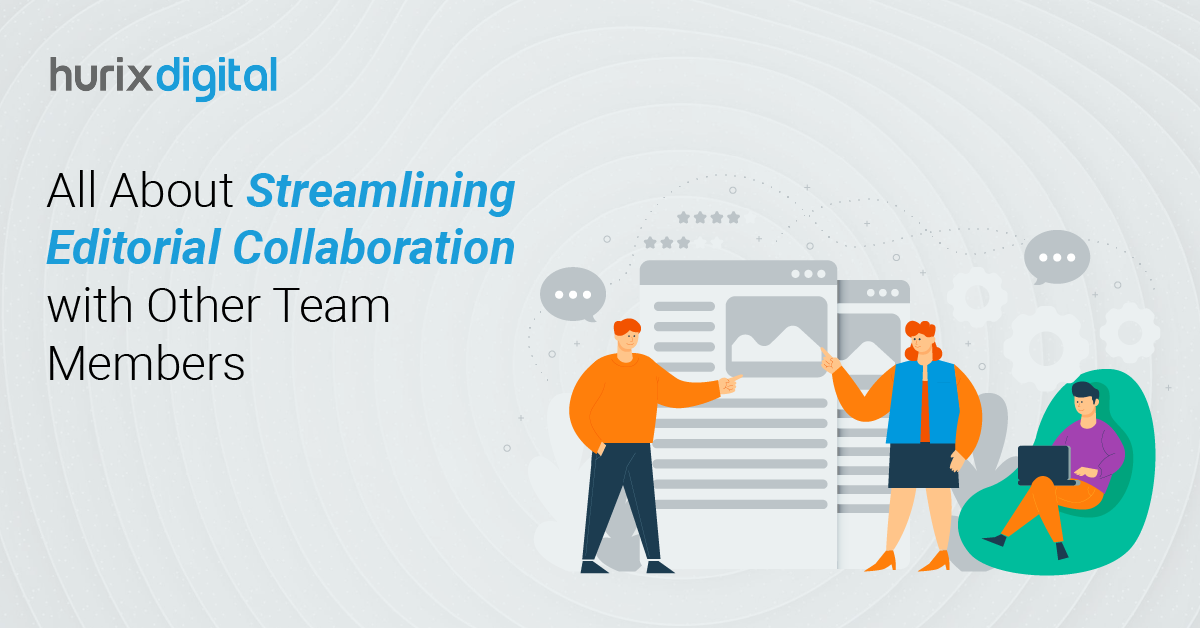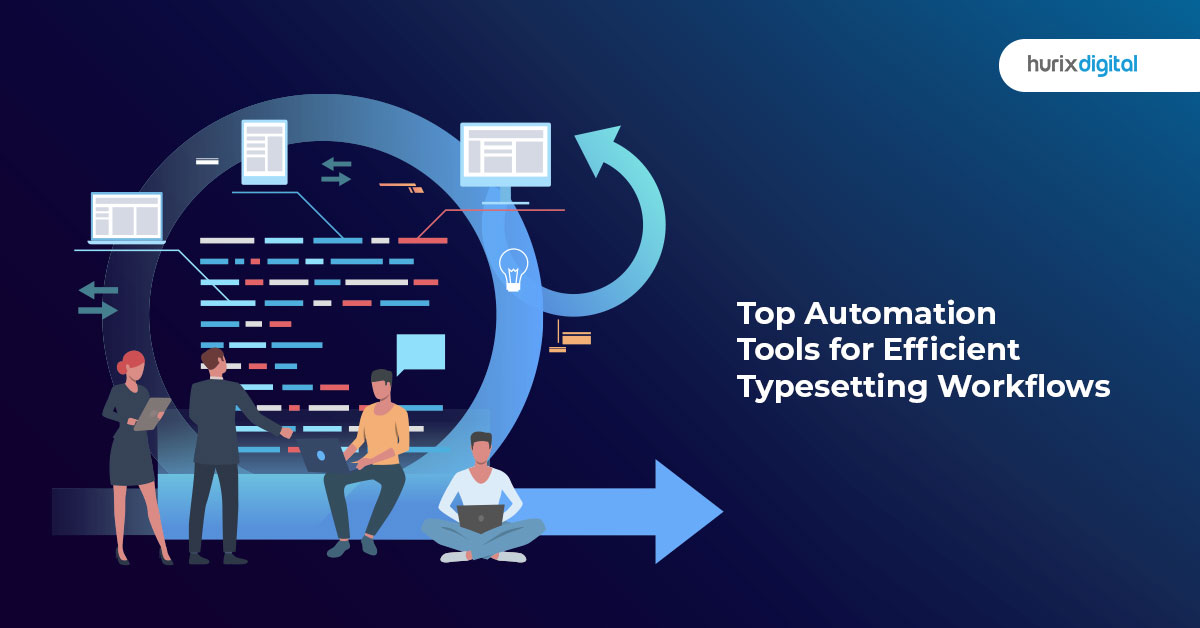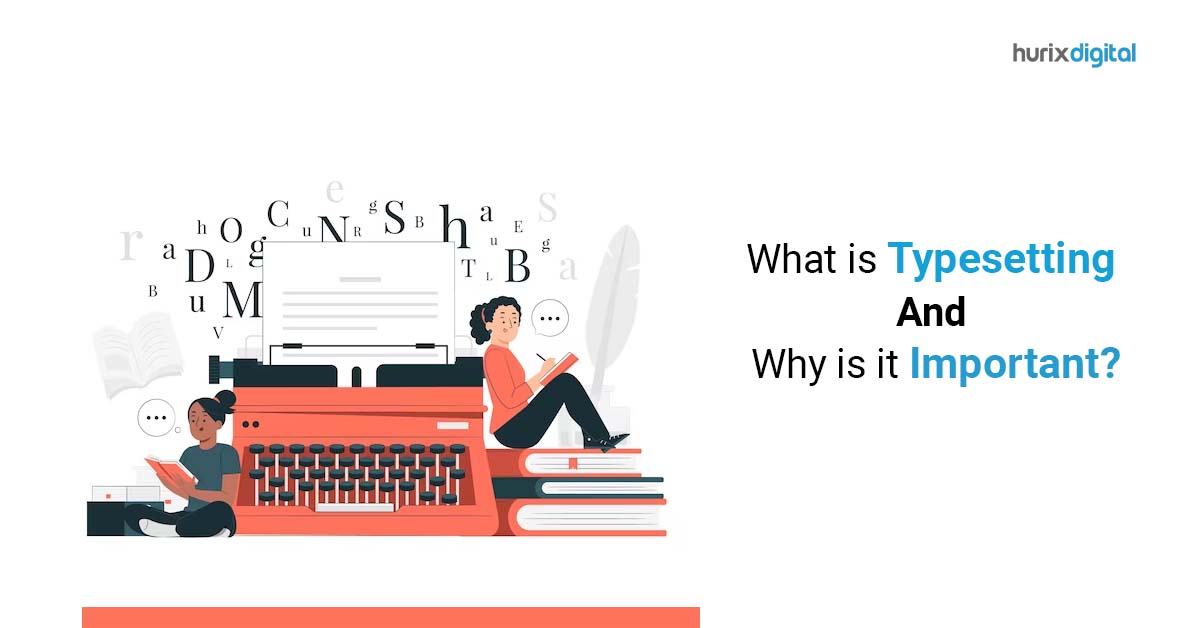
All About Streamlining Editorial Collaboration with Other Team Members
Summary
This article outlines strategies for improving editorial collaboration, workflow efficiency, and content quality through enhanced communication, centralized storage, and training.
Have you ever faced challenges like poor content quality and missed deadlines in the content creation and publishing sector? Streamlining editorial collaboration can resolve all these!
The key is to ensure effective communication in production workflows which can mitigate turnaround times and improve the content quality significantly.
If you want to transform your content production process, you must implement effective collaboration between editors, typesetters, and production managers.
An editor-typesetter-manager collaboration means that experts evaluate every piece of content to improve its overall quality. It means applying multiple perspectives, omitting fallacies, and meeting clear expectations.
To ensure a seamless collaboration, organizations should improve their internal communication processes by employing effective channels. This holistic approach enhances work quality and productivity and leads to greater satisfaction for team members and leaders.
Let us delve into different strategies that can lead to an efficient content production workflow!
Table of Contents:
- 5 Strategies to Ensure Effective Communication for Production Teams
- Benefits of Streamlining Editorial Collaboration between Editors, Typesetters, and Production Managers
- Conclusion
5 Strategies to Ensure Effective Communication for Production Teams
Here are five detailed strategies that the editorial manager can use to enhance collaboration between editors, typesetters, and production managers:
1. Highlight Project Management Tools
Project management tools are resources and software that are utilized to manage a task or project effectively. These tools streamline workflows, assign tasks, and track and measure performances.
You can utilize dashboards, timelines, schedules, and collaboration features that help you reach the desired outcome. Here are some important tools that can enhance effective communication for production teams:
- Centralized communication channels for all team members to communicate, share, and discuss project-related matters
- Task management tools to monitor task progress
- Scheduling and deadline tools to automate non-productive work
- Workflow automation tools to reduce manual intervention and encourage task completion on time
- Resource management tools to ensure financial control
- Tools like Asana or monday.com to keep everyone on the same page and reduce the risk of missed deadlines
2. Implement Clear Communication Channels
Clear and designated communication tools like Zoom, Microsoft Teams, Slack, etc., ensure transparent and clear delivery of messages. Here are some ways in which communication channels enhance editor-typesetter-manager collaboration:
- Provide updates on project progress and changes to all team members.
- Facilitate coordinated efforts across different roles, ensuring everyone is on the same page.
- Offer precise instructions to reduce the risk of errors and misunderstandings.
- Enable quick discussions and decision-making to resolve issues promptly.
- Allow for immediate feedback and corrections.
- Promote open channels of communication.
- Encourage an inclusive environment where all team members feel valued.
- Offer channels for mediation and conflict resolution.
Also Read: Best Practices in Editorial Project Management for Publishers
3. Set the Right Expectations
It is paramount for editorial managers to define roles, responsibilities, and deadlines at the beginning of a project. Setting the right expectations at the right time will prevent misunderstandings and motivate all team members to meet collective goals. Here are some best practices:
- Keep the team focused on the desired outcomes and hold individuals accountable for their specific tasks.
- Provide a clear schedule for task completion and ensure that deadlines are met.
- Set quality benchmarks to promote consistency and motivate the team to achieve high standards.
- Provide the right resources and establish guidelines for how and when to communicate.
- Ensure that team members feel valued and understood.
4. Maintain Centralized Document Storage and Accessibility
Maintain a centralized repository for all project-related documents, such as Google Drive or another dedicated server. This ensures that all team members have access to the latest versions of information. Here are some tips:
- Provide a reliable location for all project documents, and make sure you employ accurate versions of documents.
- Allow multiple team members to edit and share documents and project-related updates.
- Empower editors, typesetters, and managers to leave comments directly on documents and keep track of document revisions.
- Provide access to the history of changes and set permissions and access levels.
- Enhance data security by centralizing document storage and facilitating remote and mobile access to documents from any location.
- Ensure that all documents are regularly backed up and recovered in case of accidental deletion.
5. Conduct Regular Training and Workshops
Conducting regular training sessions and workshops can help streamline editorial collaboration. Use future-ready and AI-empowered content transformation platforms like Hurix Digital to develop courses and training materials for all team members to enhance their skills and knowledge.
Let us learn how you can promote efficient content production workflow through training and workshops:
- Encourage continuous learning and skill enhancement.
- Keep the team up-to-date with industry trends.
- Ensures that everyone is trained on the same processes and standards.
- Develop a common terminology that all team members understand.
- Increase awareness of how different roles contribute to the overall project.
- Enhance decision-making skills and offer training on the tools and software used in the project.
- Teach conflict resolution strategies, encourage creative thinking, and boost team morale.
- Offer opportunities for team bonding and relationship building.
- Train team members on change management and encourage a flexible approach to work.
Benefits of Streamlining Editorial Collaboration between Editors, Typesetters, and Production Managers
Promoting and ensuring effective communication for production teams brings you several advantages. Here are a few:
1. Improves Editor-Typesetter-Manager Collaboration
Streamlining editorial collaboration encourages a cohesive working environment where editors, typesetters, and production managers can effectively share ideas and feedback. This leads to a better understanding of each other’s roles and responsibilities.
When collaboration is smooth, team members can quickly address and resolve issues. They can share knowledge and expertise to develop more innovative solutions.
2. Avoids Misunderstandings
The editorial manager must standardize communication protocols to mitigate the risk of miscommunication. Clear communication guidelines should be accurately conveyed and understood. In this regard, standardized templates can help maintain consistency and ensure that everyone is on the same page.
Such practices reduce misunderstandings and the chance of errors. Companies with more informed employees have 77% better productivity than those with less informed employees.
3. Ensures Everyone Works Towards a Common Goal
You must conduct regular meetings to define and explain project goals clearly. Ensure that all team members understand the end objectives. Check progress and keep everyone focused on the same targets.
Streamlined editorial collaboration promotes a shared vision and ensures that each team member contributes to the overall success of the project.
4. Increases Efficiency and Productivity
Effective communication for production teams can help refine workflows and eliminate unnecessary processes. Effective communication can increase productivity by 20% to 25% in organizations where employees feel connected.
This increases efficiency and helps team members complete their tasks more quickly. Effective collaboration also allows for better resource allocation, ensuring that they are used effectively.
5. Enhances Employee Satisfaction and Retention
A collaborative editorial environment reduces stress and contributes to a more supportive workplace. Streamlining editorial collaboration ensures that editors, typesetters, and managers learn from each other and develop new skills. This enhances job satisfaction and encourages long-term commitment.
Also Read: Four Top Transformative Trends in Prepress Services
Conclusion
A robust content production workflow between editors, typesetters, and production managers enhances communication and reduces misunderstandings. This leads to increased efficiency and enhanced quality control. This guide will help you adopt and implement strategies to create a more productive work environment.
For training content and streamlined publishing processes, contact the experts at Hurix Digital. The professionals ensure that the content produced meets the highest quality standards. Ultimately, it revolves around streamlining editorial collaboration, which leads to a more satisfied and motivated editorial team.
Get in touch with us today!

Vice President – Digital Content Transformation. He is PMP, CSM, and CPACC certified and has 20+ years of experience in Project Management, Delivery Management, and managing the Offshore Development Centre (ODC).







